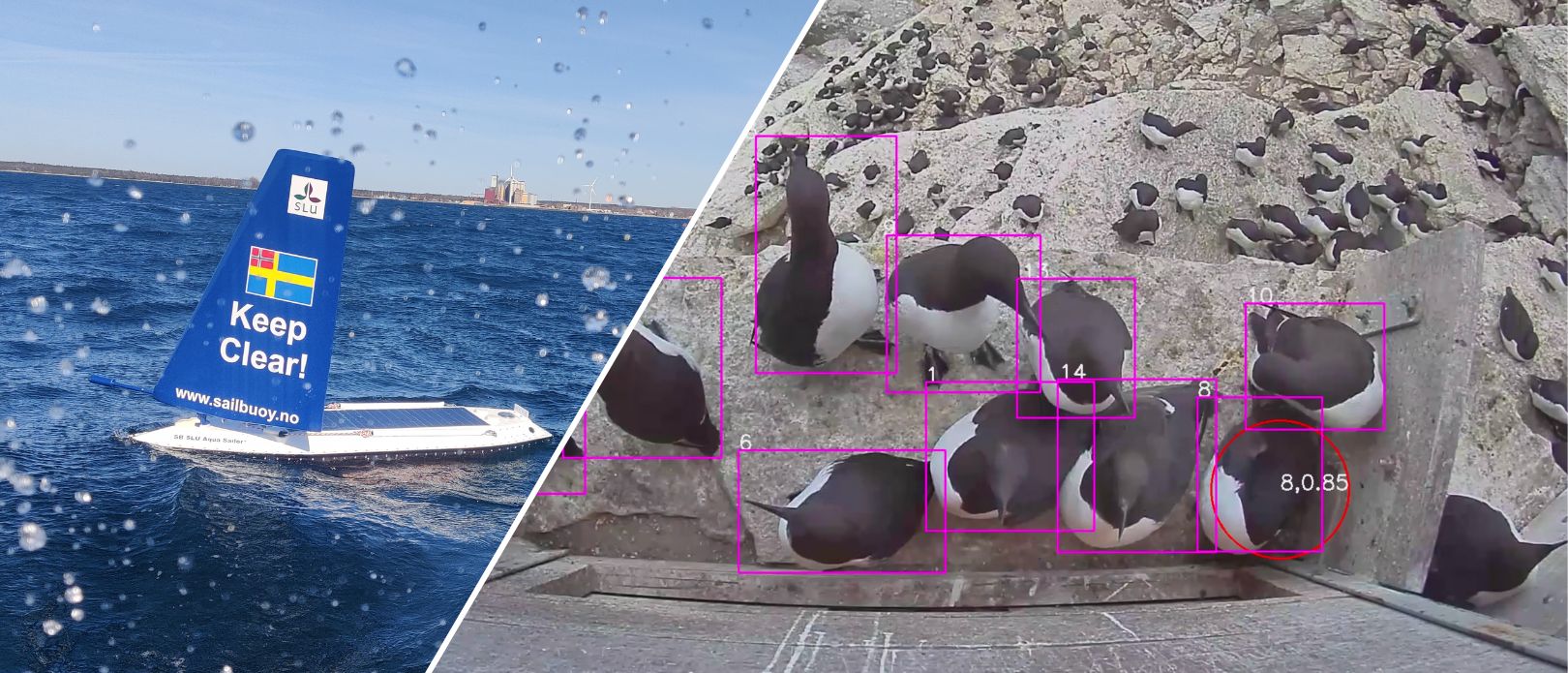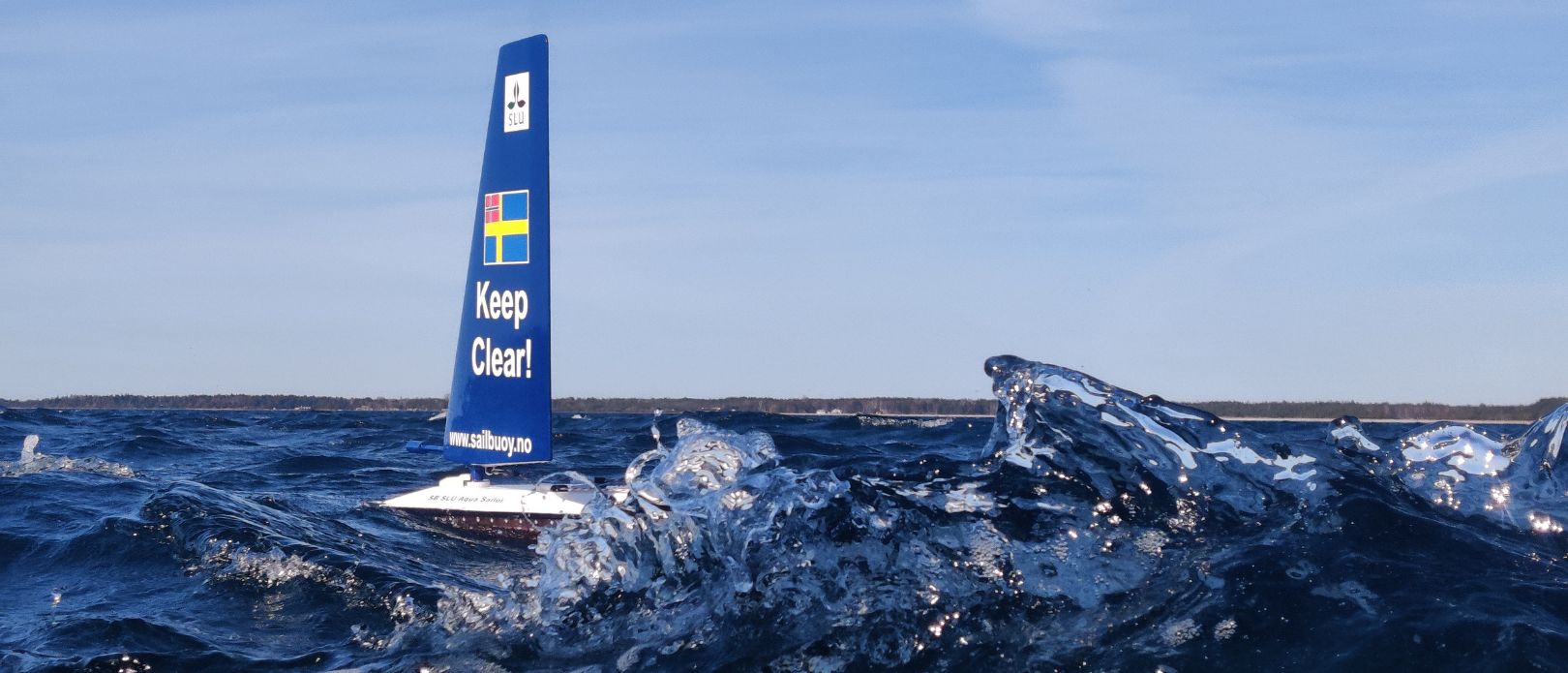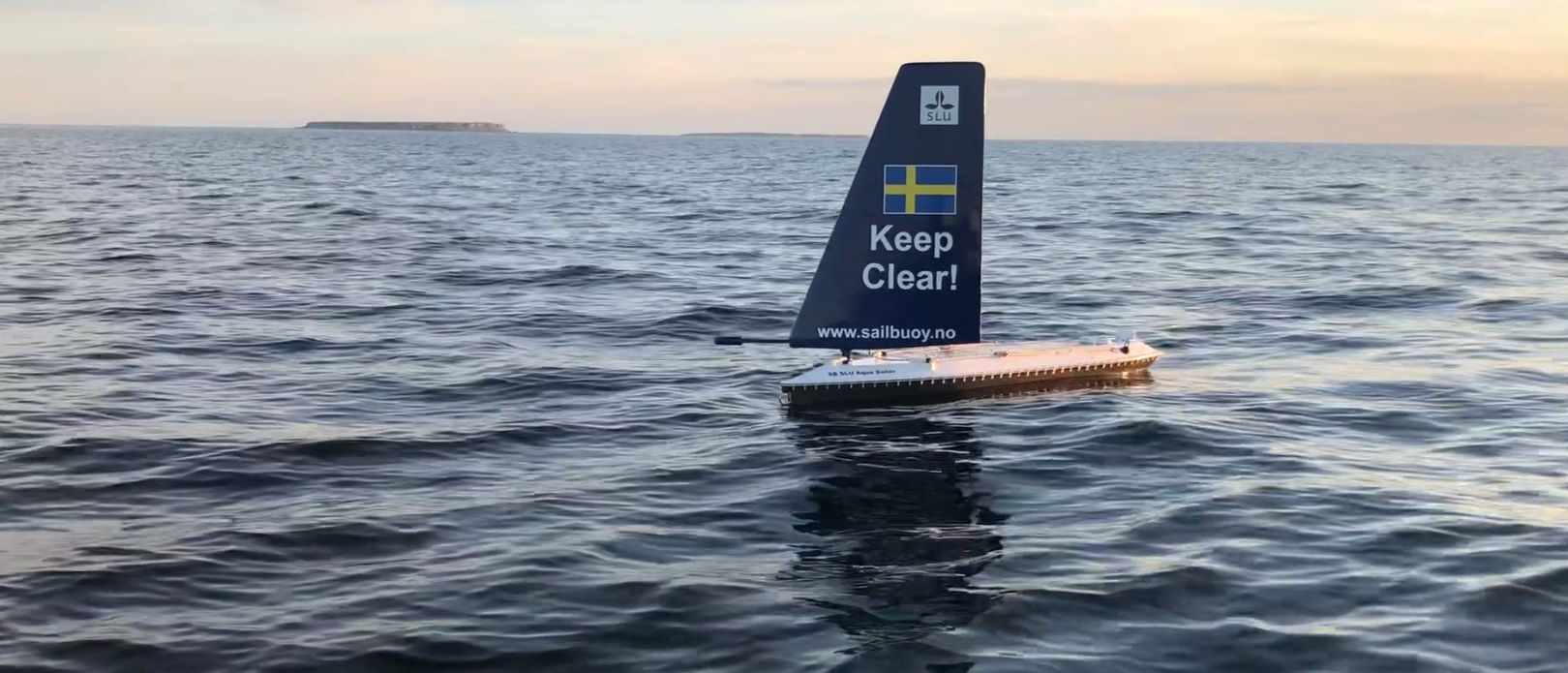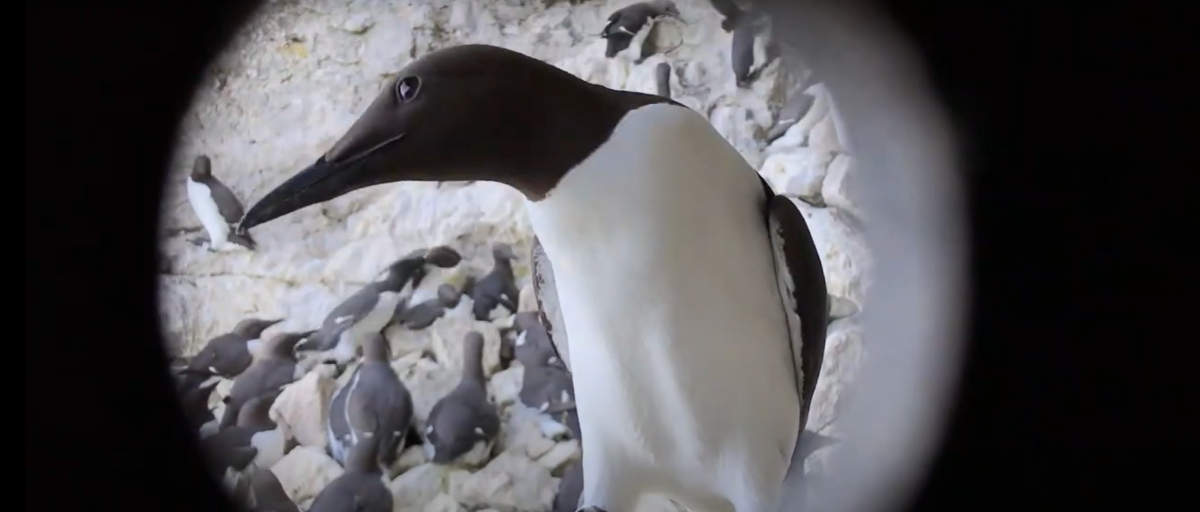Marine ecosystems
Bird AI and sailing drones – green game changers for marine ecosystems

A sailing drone, AI-geared sensors and CCTV all help better monitor marine ecosystems. Photo: The research team.
Groups of guillemots on an island in the Baltic Sea have unknowingly inspired how marine research can be done. Two AI-powered research projects can change how to monitor marine ecosystems – and potentially manage them in real-time
- AI-geared sensors, CCTV, and sailing drones powered by solar panels can improve ecosystem management
- Two research projects show that they provide insights which can allow for real-time decision-making
- Researchers are now looking to expand the learnings and put them to use in other ecosystems around the world
“We hope our AI projects in the Baltic Sea can inspire new projects all around the globe and help rapidly convey information that can form the basis of scientifically sound ecosystem management”, says Jonas Hentati-Sundberg, ecology researcher at the Swedish University of Agricultural Sciences with a PhD in marine research from Stockholm Resilience Centre.
Jonas Hentati-Sundberg has led two Stockholm Resilience Centre-supported research projects in the Baltic Sea, on and off the island of Stora Karlsö, exploring how automation and AI in environmental monitoring can strengthen ecology research with rapid high-resolution data retrieval.
Up-to-date high-resolution data can form the basis for real-time forecasting and decision-support systems for ocean management.
Lead author Jonas Hentati-Sundberg
Stora Karlsö is the second oldest natural reserve in the world and home to many colonies of breeding guillemots and razorbills. These birds are now pioneers for how marine research could be conducted.
“Traditionally bird research on the island – which dates back more than a century, the first birds were ringed in 1913 – has been done in a good old fashion way; ringing, counting and, at the best daily, field observations. With new technology at hand, marine research can cover every second of the birds’ life ashore”, says Olof Olsson, affiliate to Stockholm Resilience Centre, who is involved in the AI projects and a long-time researcher at Stora Karlsö.
By building an artificial nesting ground on a cliff of the island, and equipping it with AI-geared sensors and CCTV, the researchers were able to collect and process big data which were used to describe complex and unknown patterns in the relation between the guillemots and their environment. The results are outlined in the research paper “Seabird surveillance: combining CCTV and artificial intelligence for monitoring and research”.
The developed system uses a deep learning algorithm for object detection that has been trained on annotated images of adult birds, chicks and eggs, and outputs time, location, size and confidence level of all detections, frame-by-frame, in the supplied video material.
A total of 144 million bird detections were generated from the breeding cliff over three complete breeding seasons, 2019–2021.
“We were able to understand how object detection can be used to accurately monitor breeding phenology and chick growth. Our automated monitoring approach can also identify and quantify rare events that are easily missed in traditional monitoring, such as disturbances from predators”, says Jonas Hentati-Sundberg.
The data produced by the system is in several cases significantly more detailed than what could have been generated from observational field studies – obtaining similar data from human observers would require at least 140 weeks of full-time work.
Through running AI models in the field on miniature devices, the system has the potential to supply researchers and managers with real-time information on seabird population status.
“Such up-to-date high-resolution data can form the basis for real-time forecasting and decision-support systems for ocean management”, Jonas Hentati-Sundberg, explains.
Sail drone to guide real-time decision-making
The other leg of the project is a sailing drone, powered by solar panels and carrying a range of sensors to monitor the ocean ecosystem. Of particular value is an echosounder that can measure fish abundance and behavior down to 100-meter depth. The drone also has sensors for ocean temperature, plankton blooms, cyanobacteria and turbidity, and sends updates on ecosystem status over satellite every ten minutes.
The researchers hope the sailing drone can support real-time decision-making in marine ecosystems. This requires real-time insights and is currently limited by potential for field computation and communication technologies.
“An example of potential real-time decision-making would be dynamic marine protected areas where fisheries are regulated according to the prey need for top predators,” says Jonas Hentati-Sundberg.

Ongoing experiments with algorithms running onboard the drone will reveal the potential for such real-time applications.
Jonas and his research team that have conducted these projects are now looking to expand the learnings and put them to use in other ecosystems around the world:
“We are looking to apply our AI methods in contrasting ecosystems, for example in Southern Australia and Arctic Canada. And we would like to build decision-support systems with managers on the ground based on continuously updated data.”
The research has received support from the Arctic Research Foundation, Marcus and Marianne Wallenbergs foundation, Formas, Vinnova, Vetenskapsrådet and WWF Sweden.
Hentati-Sundberg, J., Olin, A.B., Reddy, S., Berglund, P.-A., Svensson, E., Reddy, M., Kasarareni, S., Carlsen, A.A., Hanes, M., Kad, S. & Olsson, O. 2023. Seabird surveillance: combining CCTV and artificial intelligence for monitoring and research. Remote Sensing in Ecology and Conservation.
DOI: 10.1002/rse2.329








